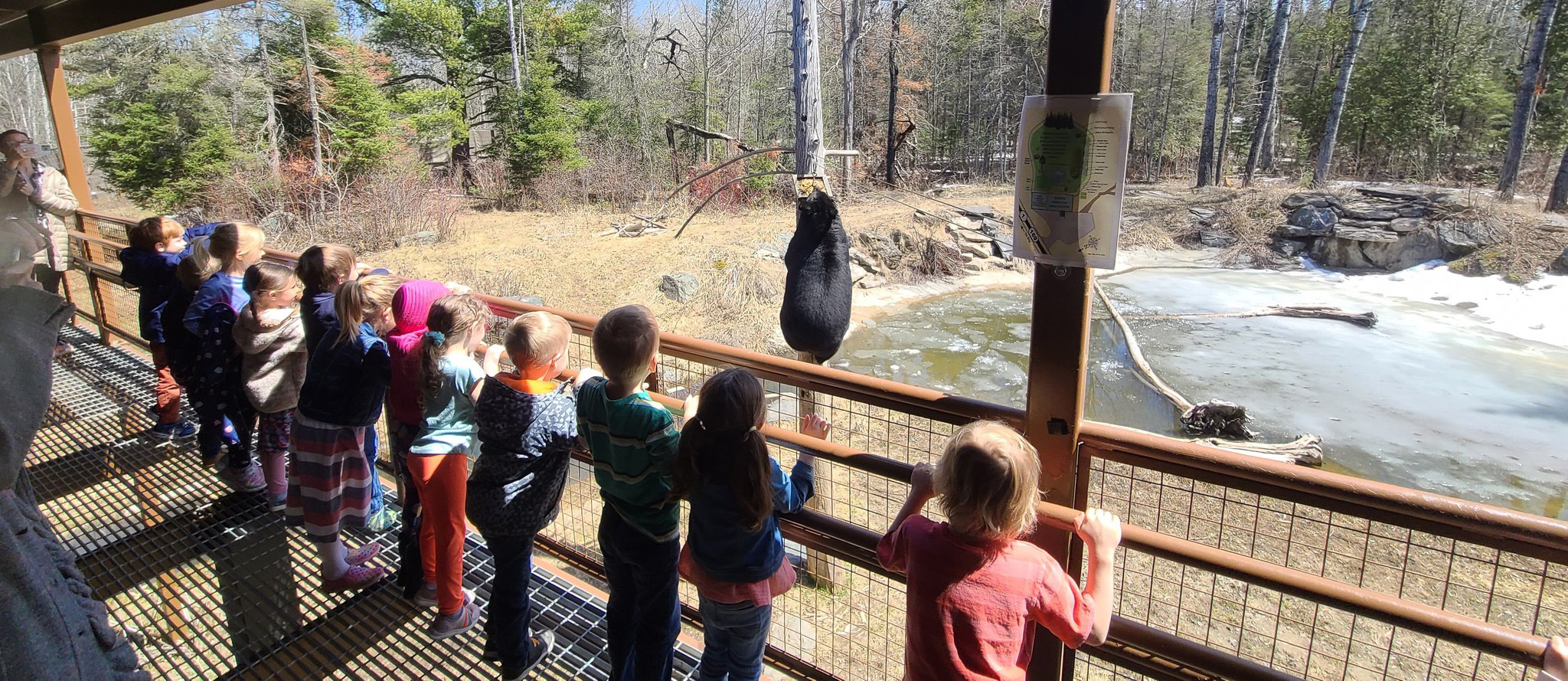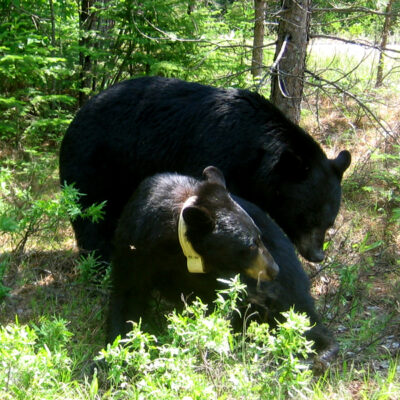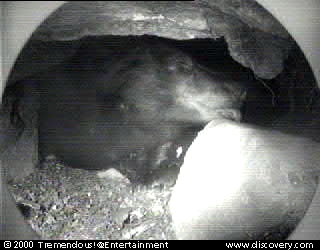Care of Newborn Cubs
Newborn cubs are smaller, relative to their mother’s size, than the young of any other placental mammal. They are totally dependent on their mothers. Newborn cubs have little fur, weigh…
Read More

Newborn cubs are smaller, relative to their mother’s size, than the young of any other placental mammal. They are totally dependent on their mothers. Newborn cubs have little fur, weigh…
Read More
Getting fat is the most important preparation for birth.After mating in late May or June, pregnant females focus on eating for the rest of the summer. Females that don’t become…
Read More
Lumpy weighed well over 600 pounds in fall and was the biggest bear in the area. One-eyed Jack was rightfully hesitant about confronting him once he saw who it was…
Read More
Black bears in northeastern Minnesota mate between mid May and late June. Males have mating ranges 10-15 miles in diameter. Each mating range contains 7-15 female territories. Some territories contain…
Read More
Malnourished black bear females do not successfully reproduce. Their offspring are absorbed in utero, are stillborn, or starve from lack of milk. In northeastern Minnesota, black bear females reproduce best…
Read More
What size litter contributes the highest number of surviving cubs to the next generation? In northeastern Minnesota, it is litters of three. The litter size (3) that contributed the highest…
Read More
How many cubs can black bears have? The record is six in Pennsylvania. Most litters are two or three. Two is most common in western North America. Three is most…
Read More
Black bear females typically produce cubs every two years once they become mature. The 2-year reproductive cycle is genetically timed to fit the annual cycle of plant growth and fruiting…
Read More
The fecal plug has long been one of the mysteries of bear hibernation. Early observers described it as a dense plug of unidentified material, fibrous plant material, and bear hair….
Read More
New Scientist News Service, February 21, 2001, Andy Coghlan Bears hardly lose any muscle when they hibernate, say zoologists at the University of Wyoming. Their findings could lead to new…
Read MoreWe are a 501(c)(3) non-profit that relies entirely on the support of visitors, merchandise sales and people like you. We do not receive any state or federal funding.
Help support our mission.
Donate Now